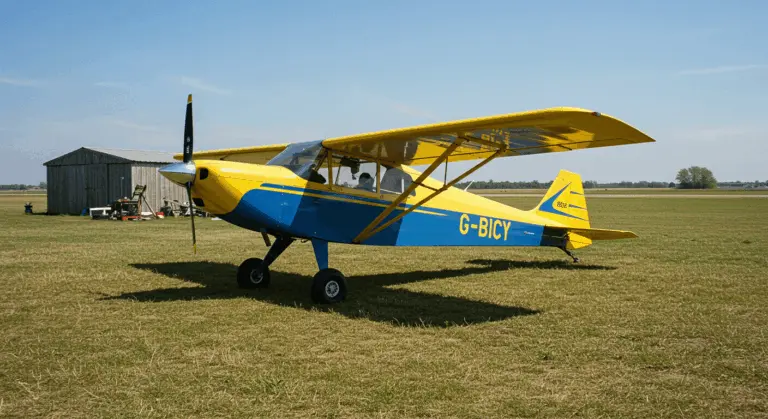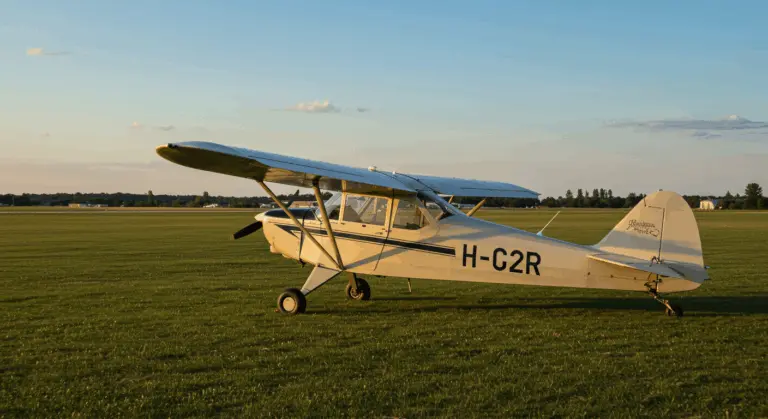The Antonov An-2: A Comprehensive Overview
Overview of the Antonov An-2
The Antonov An-2 stands as a legendary Soviet single-engine biplane that first took to the skies in 1947. Developed by the Antonov Design Bureau, it demonstrates impressive versatility through its diverse operational roles:
The An-2’s reputation stems from its proven durability and reliable performance. This is large, all-metal biplane features automatic leading edge slats and a simple system design for functionality in remote areas. Its self-contained pneumatic brakes, fuel, and starting systems eliminate ground support dependency, transforming rough, unprepared strips into viable runways.
Most notable is the An-2’s extraordinary stall characteristics—it’s virtually impossible to stall under normal conditions. Thanks to its generous wing area and remarkably low wing loading, the aircraft performs unusually well at low speeds. With a stall speed hovering around 30 knots, it can actually fly backward in strong headwinds. These characteristics have contributed to its excellent safety record and reputation for dependability.
Design and Development of the An-2
Born from forestry and agricultural needs, the An-2’s adaptable airframe proved suitable for many other roles, earning it the nickname “Jack of all trades.” Production stretched across five remarkable decades until 2001reflecting its enduring design.
While the An-2 holds an important place in aviation history, its influence continues in modern derivatives like the M28 Sky truck. Contemporary innovations—including the TVS-2MS turboprop upgrade and experimental composite wings—show how the original design principles remain relevant.
Innovative Features of the An-2
Its robust fixed tail wheel landing gear ensures good stability on challenging, uneven terrain. Meanwhile, the distinctive biplane configuration delivers exceptional lift performance at remarkably low speeds.
Operational History of the An-2
On August 31, 1947, the An-2’s maiden flight began an impressive production run—over 18,000 units rolling off assembly lines. Although manufacturing ceased in 2001, thousands remain active worldwide, especially in Russia, Kazakhstan, and Ukraine. The aircraft remained so useful that an official Russian replacement, the UGA LMS-901 Baikal, was not ordered until September 2024.
The An-2 served effectively in various military roles. The Soviet Air Force, Eastern Bloc nations, Vietnam People’s Air Force, and North Korea all relied on its capabilities. It saw action in major conflicts, including:
In 1950, the Polar Aviation Department commissioned a specialized Arctic variant. This version met strict requirements for reliable operation in freezing conditions.
Military and Civil Use of the An-2
Variants of the Antonov An-2
The An-2’s adaptable design led to numerous specialized variants, each designed for specific operational needs:
-
An-2V / An-4: Float plane versions for water-based operations.
-
An-2M / An-2SKh: Optimized for agricultural crop-dusting.
-
An-6: A high-altitude version for meteorological research.
-
An-2F: A military variant for battlefield observation and artillery spotting.
-
An-3: An upgraded version with a turboprop engine.
-
An-2-100: A further refinement with an enhanced turboprop and reversible propeller.
-
Experimental: Modern conversions include unmanned drones and wing-in-ground effect craft.
Production History and Global Manufacturing
The An-2 had one of the longest production runs in aviation history, spanning multiple continents and decades. Manufacturing commenced in Novosibirsk, Russia, shortly after that historic 1947 maiden flight.
As demand grew, production expanded to Ukraine, where the Antonov Design Bureau was headquartered. Poland, however, became the major international production center, where PZL Mailed manufactured thousands of An-2 aircraft under license. This Polish production was crucial in supplying both Warsaw Pact nations and international customers with this capable utility aircraft.
China joined the production ranks as another major manufacturer, manufacturing it as the Y-5. Internationally, this versatile aircraft wore many names, including the PBL-MIELEC An-2 in Poland (nicknamed “Ante”) and the Shijiazhuang/Nanchang Y-5 in China.
Accidents and Incidents Involving the An-2
Like any aircraft with decades of service, the An-2 has experienced various incidents. Many accidents stem from the aircraft’s advancing age—mechanical failures from worn components become increasingly common, particularly where maintenance resources are scarce.
The aircraft often operates in challenging conditions—remote airstrips with difficult terrain and harsh weather that increase operational risks. Though pilot error occasionally plays a role, the An-2’s forgiving flight characteristics have often mitigated the severity of such incidents.
The An-2’s safety record should be viewed in context. Consider its remarkable longevity and the punishing conditions it routinely faces. This aircraft’s inherent durability frequently prevents minor issues from cascading into major failures. After more than 75 years of active service, its continued widespread use demonstrates operators’ continued confidence in its basic reliability.
Specifications of the Antonov An-2
| Specification | Metric | Imperial |
|—|—|—|
| Engine | 1,000 hp PZL Kalisz Asz-62IR radial engine | – |
| Maximum Speed | 258 km/h | 160 mph |
| Cruise Speed | 190 km/h | 120 mph |
| Stall Speed | ~50 km/h | ~31 mph |
| Range | 845 km | 525 miles |
| Service Ceiling | 4,500 m | 14,800 ft |
| Rate of Climb | 3.5 m/s | 690 ft/min |
Conclusion: The Legacy of the An-2
The Antonov An-2 has made a lasting impact in aviation history through its combination of versatility, durability, and massive production scale. As one of history’s most-produced aircraft, its design has proven adaptable across a wide range of applications.
What makes the An-2 notable is its enduring relevance decades after production ceased in 2001. Unlike countless aircraft of its generation now relegated to museums, it thrives in active service worldwide—particularly where its ability to operate with minimal infrastructure support proves invaluable.
The An-2 has influenced later aircraft designs, emphasizing practical utility, pilot-friendly handling, and operational flexibility. As specialized utility aircraft gain renewed appreciation, the An-2’s contributions become more apparent. Affectionately known as the “Anoushka,” it will likely continue flying for decades, building on a legacy of over 75 years of service.







